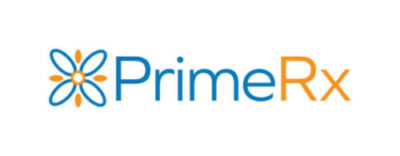OTC Products Offer Pharmacies a Revenue Bright Spot – PrimeRx, PrimeRx POS, and PrimeRx MARKET Can Help

Introduction
The financial news is not good for the nation’s independent pharmacies. The 2024 NCPA Digest reported that gross profit margins fell to an all-time low of 19.7% during 2023, “the lowest point in the NCPA Digest Report’s 10-year lookback window.” The decline is driven by factors including reduced reimbursement rates, increased drug costs, arbitrary pharmacy benefit manager (PBM) practices, and the overall effects of inflation.
The situation has forced many pharmacies to close their doors, with the number of independent pharmacies falling from 19,432 during 2023 to 18,984 stores as of June 2024. That’s a loss of more than one pharmacy per day, the analysis notes.

As pharmacies look for economic lifelines, sales of OTC products offer tremendous opportunity. OTC product sales account for approximately 10% of the typical pharmacy’s revenue. But conditions are ripe for pharmacies to increase sales. For one thing, consumers have driven purchases of personal health products including supplements and nutraceuticals to record levels. And a growing number of medications are now available without a prescription, making it easier for consumers to obtain essential medications. Consider a few statistics about current consumer buying habits with regard to OTC products:
- OTC medicine sales amounted to $44.3 billion during 2024, and are expected to increase at an annual rate of 3.5% over the next four years.
- According to the Consumer Healthcare Products Association (CHPA), U.S. consumers “make 26 trips a year to purchase OTC products,” while visiting doctors’ offices an average three times per year.
- Additional research by CHPA found that during 2021, nearly 18 million Medicare patients were enrolled in plans that provided an average $400 in OTC product coverage. This amounted to more than $7 billion of Medicare coverage for OTC products. However, 70% of those benefits went unused, leaving nearly $5 billion in OTC allowances unspent.
- In recent years, the FDA has switched several popular medications to OTC status, allowing patients more convenient access to products including Nasonex, Voltaren Gel, Lastacaft, Astepro, and Pataday.
- Top-selling OTC drug categories during 2024, based on CHPA data, included:
- Upper Respiratory $11.5 billion
- Analgesics $4.9 billion (Internal)
- Toothpaste $3.7 billion
- Antiperspirants $3.4 billion
- Heartburn $2.2 billion
- Oral Antiseptics $2.0 billion and rinses
- Laxatives $1.9 billion
- Eye Care $1.8 billion
- First Aid $1.6 billion
- Sun Care $1.6 billion
- Lip/Oral Treatment $1.4 billion
- Analgesics $1.4 billion (External)
- Anti-smoking $934 million products
- Female $677 million contraceptives
- Acne $653 million
- Eczema & Psoriasis $487 million
- Gastrointestinal $463 million
- Footcare $452 million
- Sleeping Aids $420 million
- Hand Sanitizer $412 million
- Although not considered “OTC drugs,” dietary supplements and nutraceuticals offer another potential source of pharmacy revenue. In the United States nearly 50% of adults take at least one dietary supplement, a rate that jumps to more than 65% among women. The industry was valued at US$591.1 billion in 2023, and is expected to grow at annual rate of 7.6% for the next several years.
- And critically important, OTC products help control health care costs. According to CHPA, every dollar spent on an OTC medication saves the U.S. healthcare system $7.33.
Clearly there is demand among consumers for OTC products. And a pharmacist that takes the time to focus on its OTC offerings will likely see those efforts rewarded with improved sales and patient loyalty.
But how can a busy pharmacy tap into market opportunities? This is where technology can have a significant role, both in letting customers know about product inventory, and facilitating the pharmacy’s ability to obtain OTC products at a competitive price and ensure products are continually in stock.
PrimeRx, PrimeRx POS, and PrimeRx MARKET – Solutions for Improving OTC Product Sales
For thousands of pharmacies, PrimeRx has long been a trusted source of technology-based pharmacy management and efficiency. The company offers comprehensive software solutions that address real-time needs of today’s busy pharmacies – including the need for OTC product management. A brief overview of relevant PrimeRx capabilities includes:
PrimeRx MARKET – the pharmacy industry’s largest online marketplace
PrimeRx MARKET is the newest addition to the PrimeRx family of solutions. Pharmacies that join the online marketplace enjoy direct access to more than 40 of the pharmacy industry’s largest prescription drug and OTC product suppliers. With just a few keystrokes, a pharmacy can identify purchasing options for needed products; compare each supplier’s pricing; and seamlessly submit orders – all within the PrimeRx MARKET platform. The marketplace ensures pharmacies have cost-competitive access to the OTC products patients need most. This includes diabetic supplies, pain relievers, allergy medications, cold/flu treatments, dermatology products, and digestive health materials, among many other OTC product categories.
One key advantage of PrimeRx MARKET is the ability to easily stock specific OTC products that pharmacists frequently recommend based on a patient’s prescriptions. For example:
GLP-1 Agonists (e.g., Mounjaro, Ozempic, Wegovy, Trulicity)
Pharmacists often recommend:
– Senokot-S, Benefiber, or Dulcolax for constipation
– Vitamin B12 for fatigue
– Meclizine or Dimenhydrinate for nausea during titration
Bisphosphonates (e.g., Alendronate, Risedronate)
Pharmacists often recommend:
– Calcium citrate (for better absorption)
– Vitamin D3, taken at a different time than the bisphosphonate dose
Metformin
Pharmacists often recommend:
– Vitamin B12 to prevent or treat deficiency with long-term use
– Loperamide for early gastrointestinal side effects
– Acetaminophen or ibuprofen for headaches
Statins
Pharmacists often recommend:
– CoQ10 (100–200 mg daily) to support muscle health and reduce fatigue
By sourcing these commonly recommended products through PrimeRx MARKET, pharmacies can ensure they have the inventory patients need—improving care, supporting adherence, and boosting front-end revenue.
Pharmacies no longer need to spend time calling around to find each supplier’s product availability and pricing. Instead, results are generated in real-time and provided in a logical format that allows pharmacists to quickly identify an ideal purchasing provider.
Pointy helps spread the word about OTC product availability
Consumers in need of a certain product can learn that their local pharmacy is a viable buying option when it shows up in a Google search. This is accomplished through the Pointy solution, which pharmacies can integrate with directly from the PrimeRx platform.
Pointy helps pharmacies appear in consumers’ searches through a small device that attaches to a point-of-sale barcode scanner. When a product is scanned, it is immediately added to a “Pointy Page” located on the pharmacy’s website. The pharmacy will then appear as a buying option for subsequent searches of that product.
Suggestive Selling at Point-of-Sale
The PrimeRx POS solution includes an innovative “suggestive selling” feature that helps boost sales of OTC products. The suggestive selling function proactively recommends OTC products that complement a patient’s medication purchases. This could include, for example, a suggestion for an anti-nausea medication for a patient prescribed a medication likely to cause vomiting, or a suggestion for supplements to counter medications that cause vitamin deficiencies.
In addition to this feature, which is only offered by PrimeRx, the system is a cloud-based, highly intuitive solution that allows pharmacies to manage point-of-sale systems from any device with internet access. This includes seamless payment processing and signature capture, with all records stored within PrimeRx.
FSA/HSA Benefit Management
Pharmacies can rely on PrimeRx to assist patients in using their flexible spending accounts (FSAs) and health savings accounts (HSAs) to obtain OTC products. This is especially important since most plans operate on a “use it or lose it” basis, with unspent funds forfeited at the end of each year.
PrimeRx identifies all products eligible for FSA/HSA spending coverage so that transactions are processed smoothly with applicable benefits applied at the pharmacy counter. In addition, PrimeRx satisfies all Internal Revenue Service and PCI Security Standards Council requirements to allow pharmacies to easily process FSA/HSA transactions and capture and store electronic signatures.
Patient Records
As with all medications – prescription and non-prescription – it’s important for a patient’s medical record to capture as much information as possible. Extensive records that include OTC medication usage allow the pharmacist to have better visibility into a patient’s condition and treatment plan. Critically important, having this information will alert the pharmacist to potential adverse reactions between an OTC drug and a prescription drug the patient is taking. PrimeRx allows the pharmacist to easily capture notes about a patient’s medication history, with the updated record seamlessly updated and stored.
Today there are more than 300,000 OTC medications available in the U.S., representing more than 80 therapeutic categories ranging from acne to allergies and everything in between. For every malady, it seems, there is an OTC product. Improving sales of these products offers a tremendous opportunity for pharmacies trying to navigate today’s challenging economic environment. As always, PrimeRx, PrimeRx POS and PrimeRx MARKET stand ready to help, with capabilities that ensure the highest rates of functionality and efficiency.

